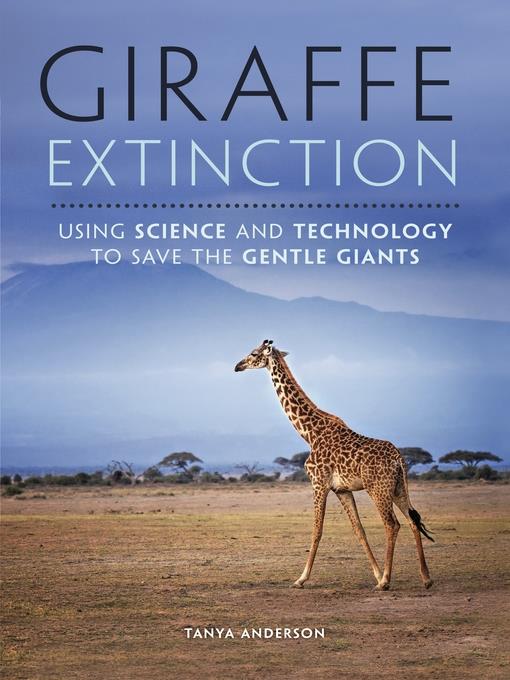
Giraffe Extinction
Using Science and Technology to Save the Gentle Giants
فرمت کتاب
ebook
تاریخ انتشار
2019
Lexile Score
1120
Reading Level
7-9
ATOS
8.1
Interest Level
6-12(MG+)
نویسنده
Tanya Andersonشابک
9781541572249
کتاب های مرتبط
- اطلاعات
- نقد و بررسی
- دیدگاه کاربران
نقد و بررسی

August 1, 2019
Giraffes have been known to humans for millennia, and this book introduces this beloved species and the threats it faces. Ancient petroglyphs of giraffes exist in Namibia, and giraffes' striking features have been familiar in illustrations from ancient times to the present day. The scientific community widely assumed that they were abundant. However, a report by the International Union for Conservation of Nature alerted scientists to a 40% decline in the number of giraffes in the wild between 1985 and 2015. The author describes the study of giraffes, beginning with field studies by pioneering Canadian biologist Anne Innis Dagg in the 1950s, and the gradual growth in understanding of giraffe subspecies, characteristics, and behavior that led to the discovery of their "silent extinction" and the movement to conserve and protect the species. The author systematically analyzes the reasons behind their declining population, which include animal predators, poaching, habitat loss, war, climate change, and trophy hunting. The book is engagingly designed, with color photographs, informative sidebars, detailed features such as those about giraffe taxonomy and the Masai Mara National Reserve in Kenya, and information about conservation and rescue organizations. A fascinating and comprehensive analysis of the tragic decline of giraffes and the heroic efforts to reverse this trend. (giraffe guide, glossary, source notes, selected bibliography, further information, index, photo credits) (Nonfiction. 12-16)
COPYRIGHT(2019) Kirkus Reviews, ALL RIGHTS RESERVED.

November 1, 2019
Gr 6-9-In this slim volume crammed with information, readers learn why the world's giraffe population has decreased by 40 percent since 1985. Written in short chapters interspersed with color photographs and infographics, this title will appeal to striving readers. It's packed with facts about the giraffe's taxonomy, its nine subspecies, and the threats to its population in Africa. Plenty of teens are interested in endangered species, but this title is probably better suited to those doing research rather than to casual readers. The author delves into great detail about the illegal poaching, deforestation, diseases, military conflicts, and human overpopulation that are causing the rapid decline in the giraffe's numbers. Though the volume is marketed to high school readers, the explanation of simple terms like symbiosis and parasites indicates that the book might be better suited to a middle school audience. The two photos of giraffes that have been killed might upset younger readers, but the book ends on a hopeful note, focusing on the conservation efforts of various independent organizations. Anderson also suggests that readers can use social media to spread awareness, particularly on World Giraffe Day, June 21. The author's meticulous research is apparent from the extensive back matter, including source notes, a bibliography, and suggested further reading. VERDICT Purchase for school and public libraries where endangered species are a hot research topic.-Amy Duffy, Chicago Public Library
Copyright 2019 School Library Journal, LLC Used with permission.

September 15, 2019
Grades 8-12 This sobering look at an iconic African animal offers insights into the complex challenges the giraffe faces. A 2015 study revealing that this keystone species' numbers are in rapid decline came as a shock and a call to action. This book introduces the different giraffe species and the various efforts being made to protect them from what has become known as the Silent Extinction. The Red List of Threatened Species, compiled by the International Union for Conservation of Nature, is explained and referenced throughout the ensuing discussion of giraffes' vulnerability status, and other tools used by scientists and conservationists are likewise explained. Important work by groups such as the Giraffe Conservation Foundation is relayed in detail, as is the critical importance of working with local people to address broader issues, like poaching that results from a region's poverty. Though the text can be dry, it is well researched and will prove a useful resource to students researching wildlife conservation. The last two chapters spotlight positive examples of giraffe conservation and offer ways to advocate for these quiet creatures.(Reprinted with permission of Booklist, copyright 2019, American Library Association.)

























دیدگاه کاربران